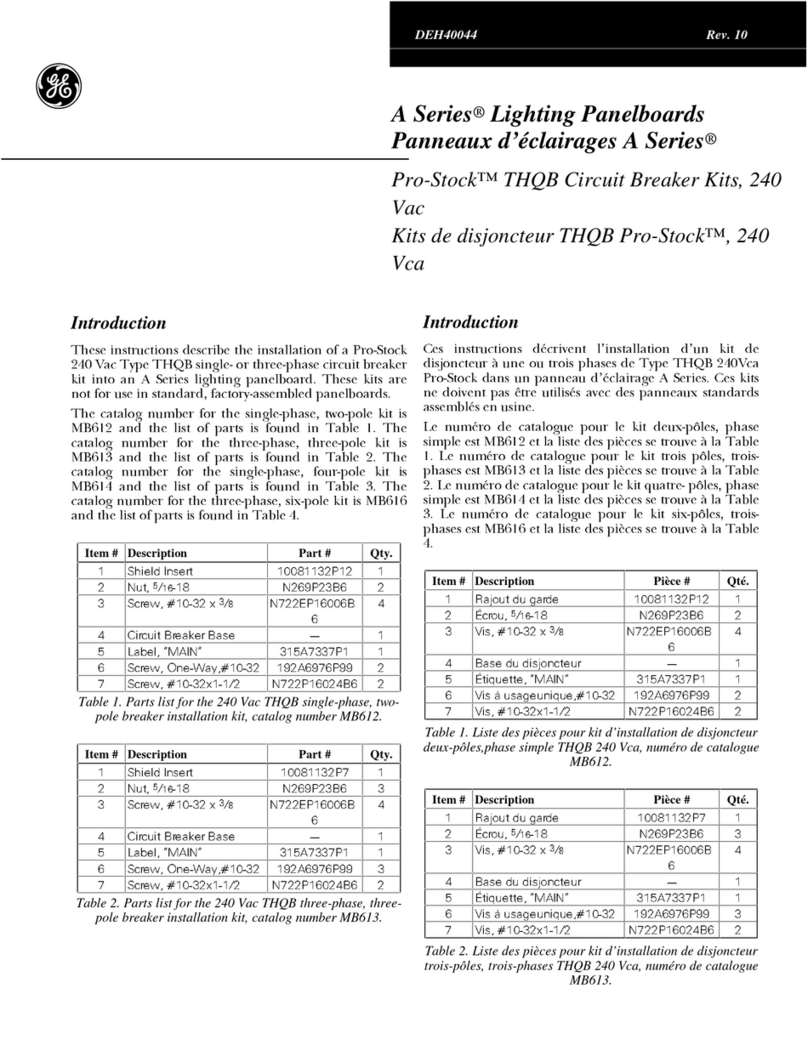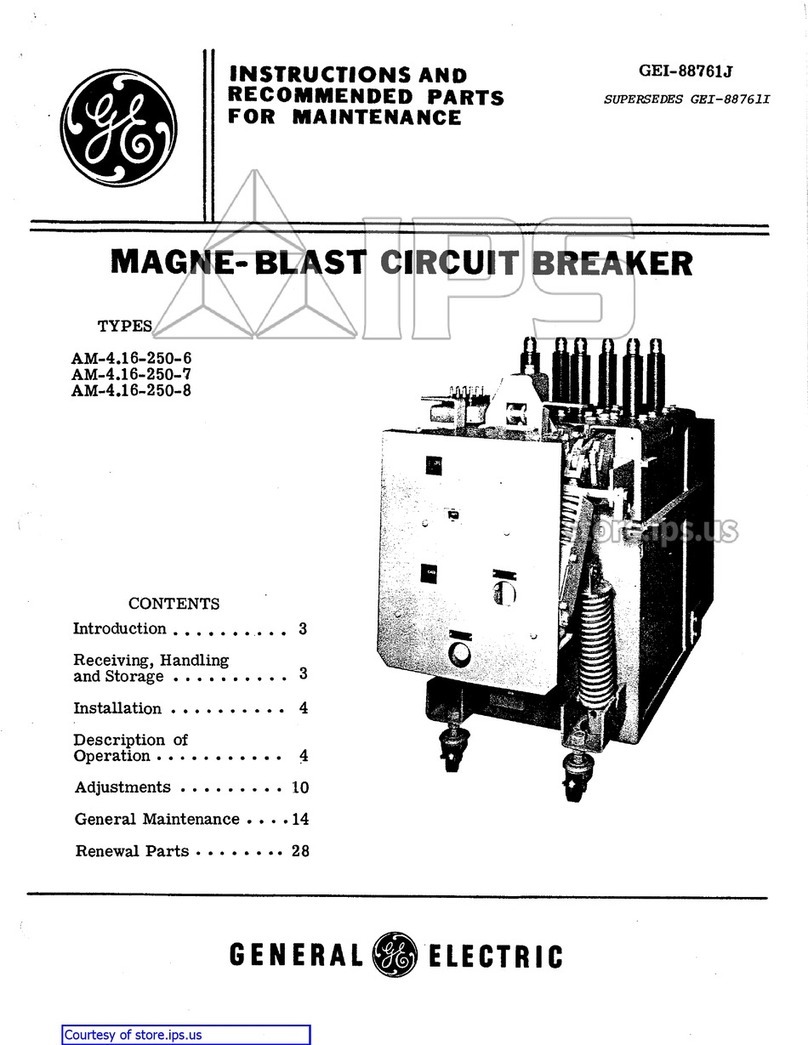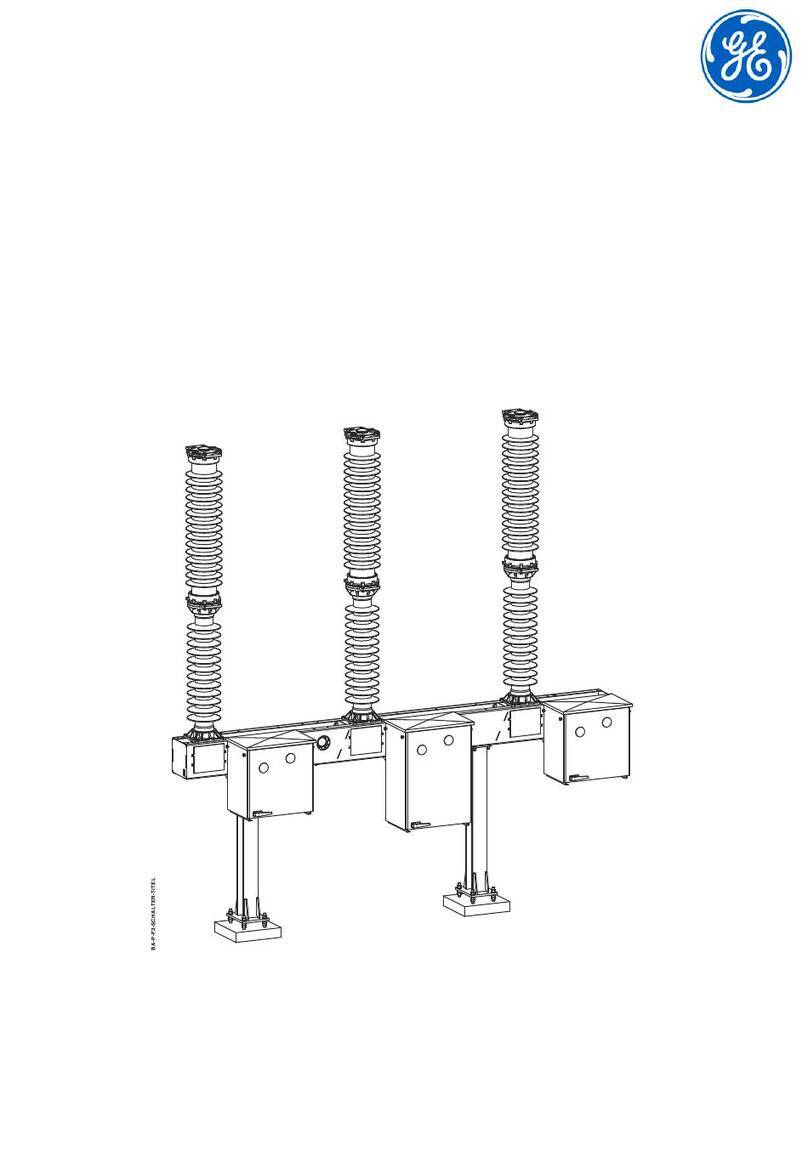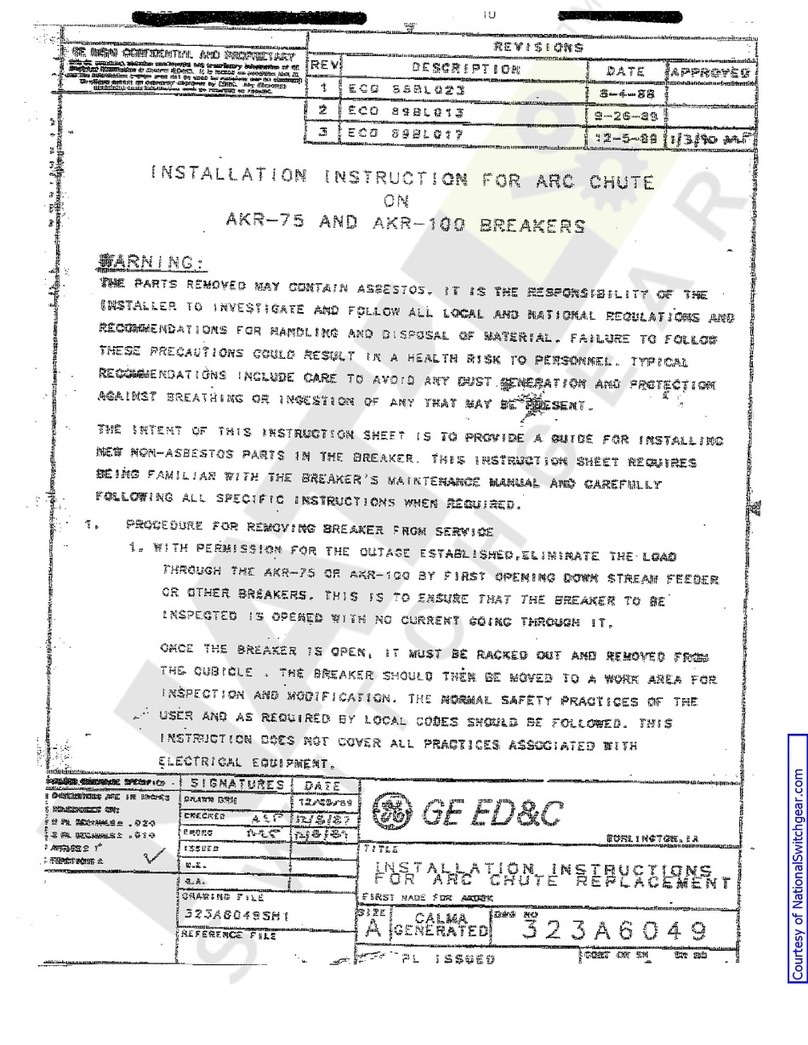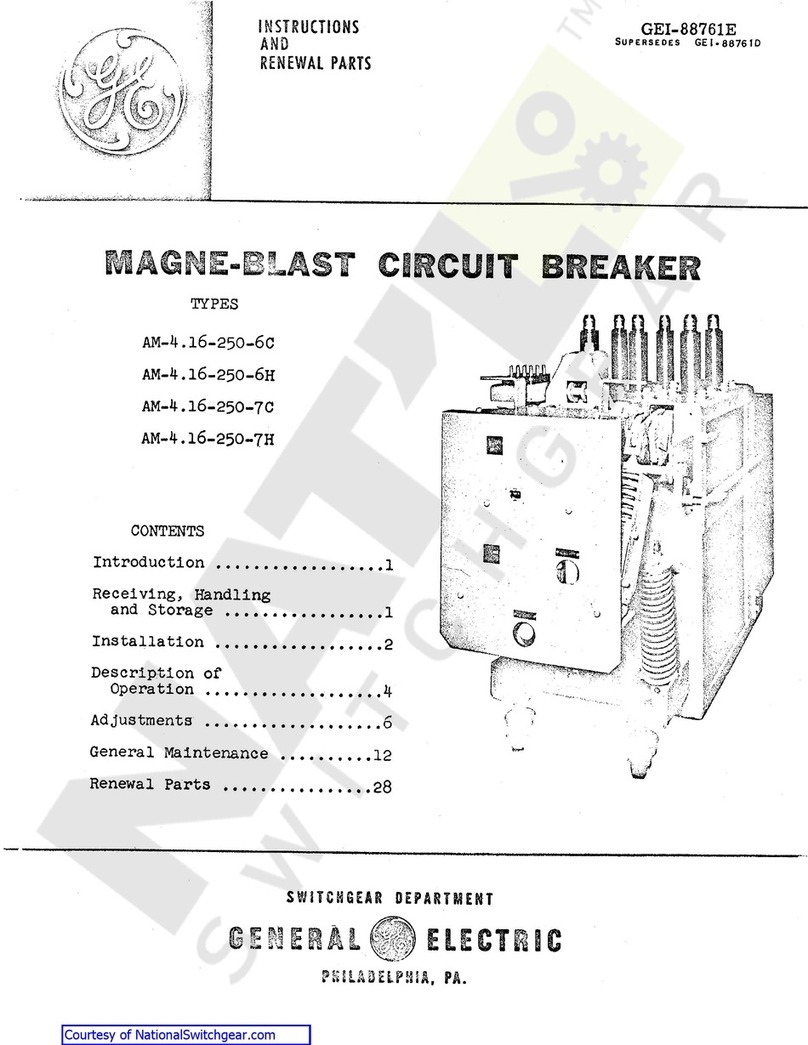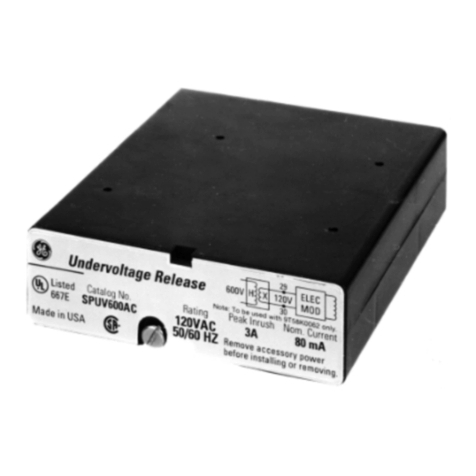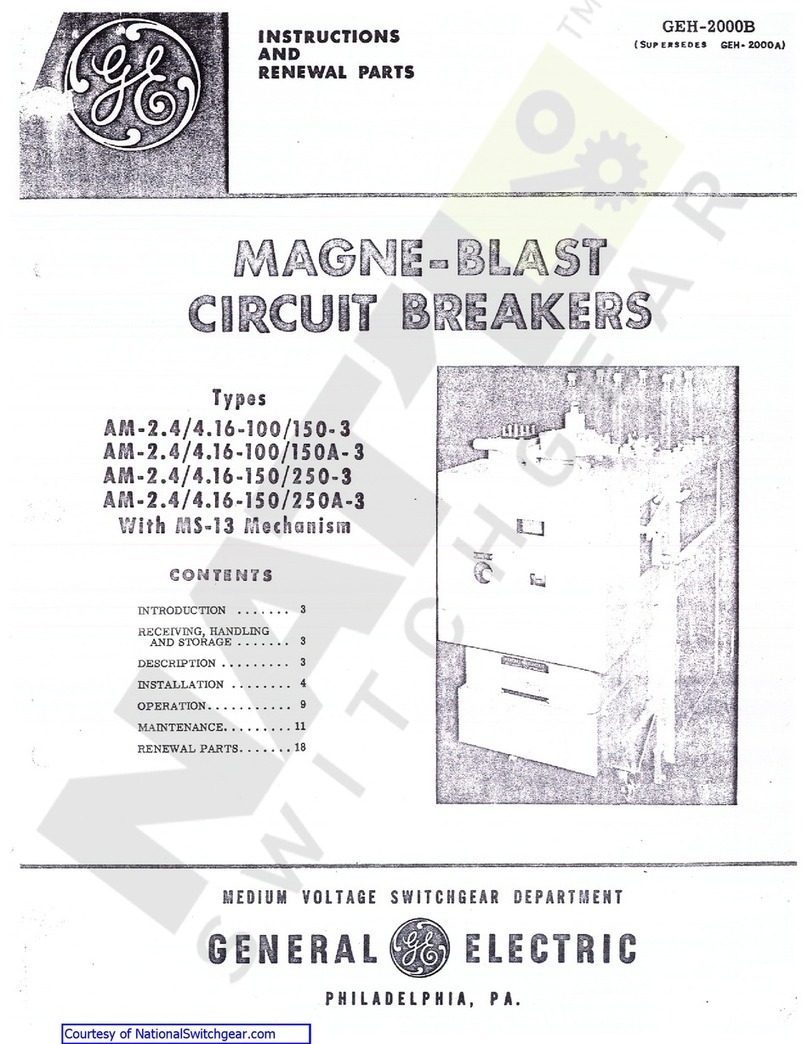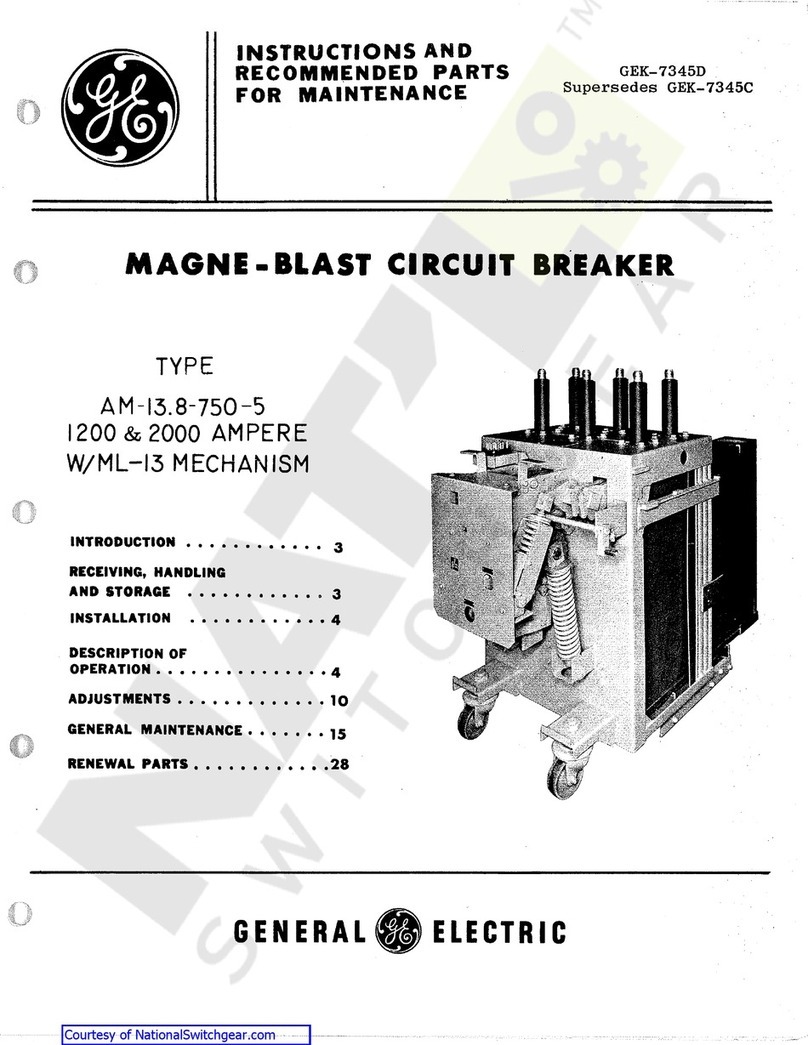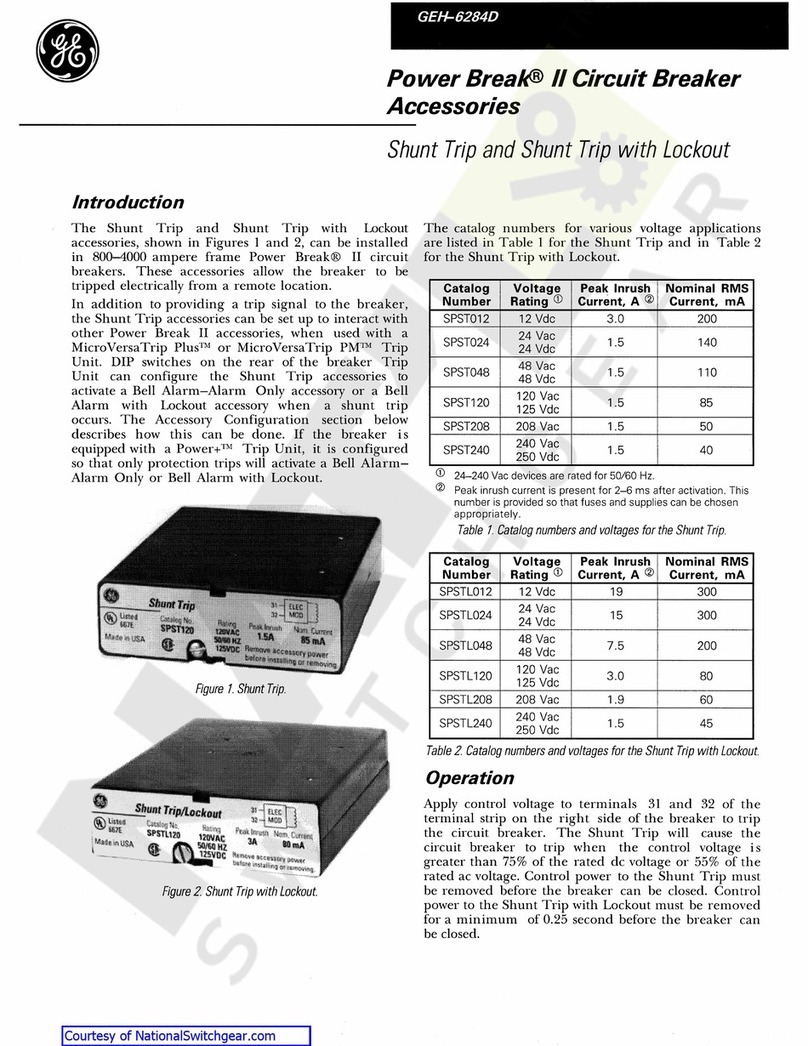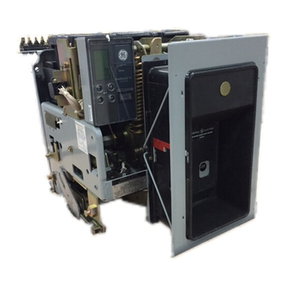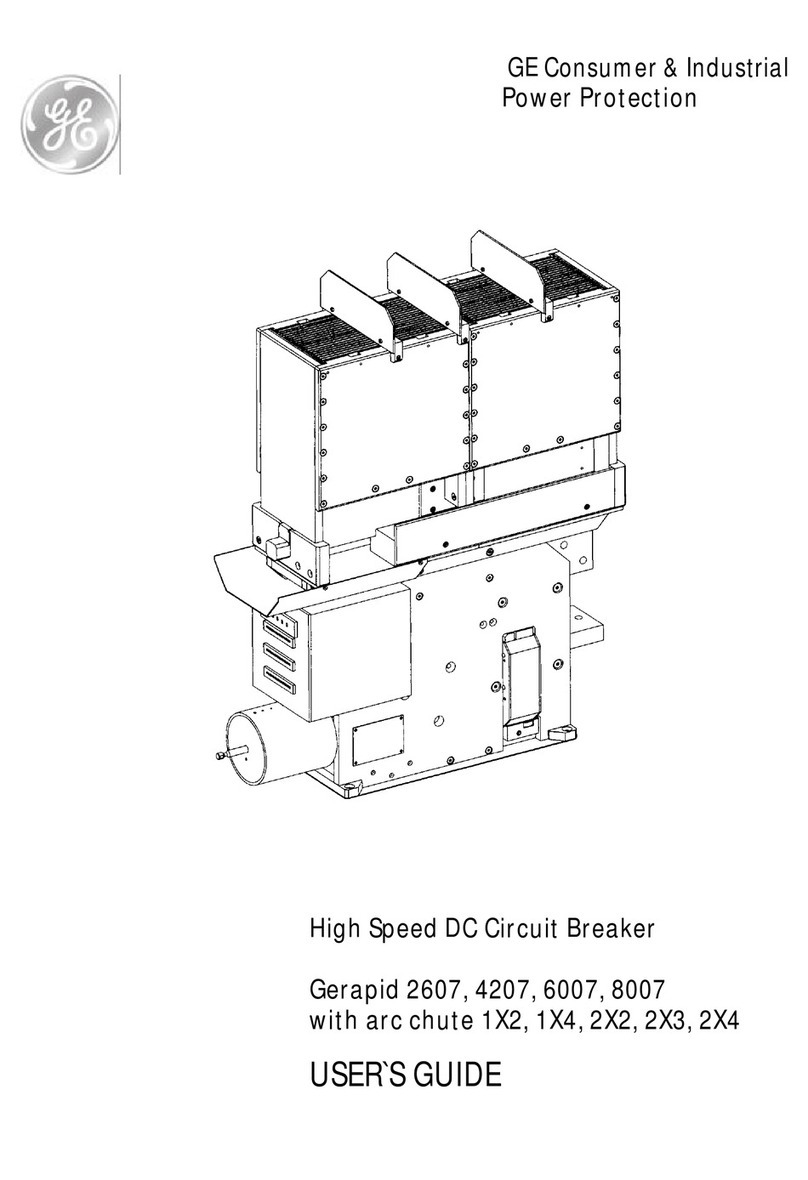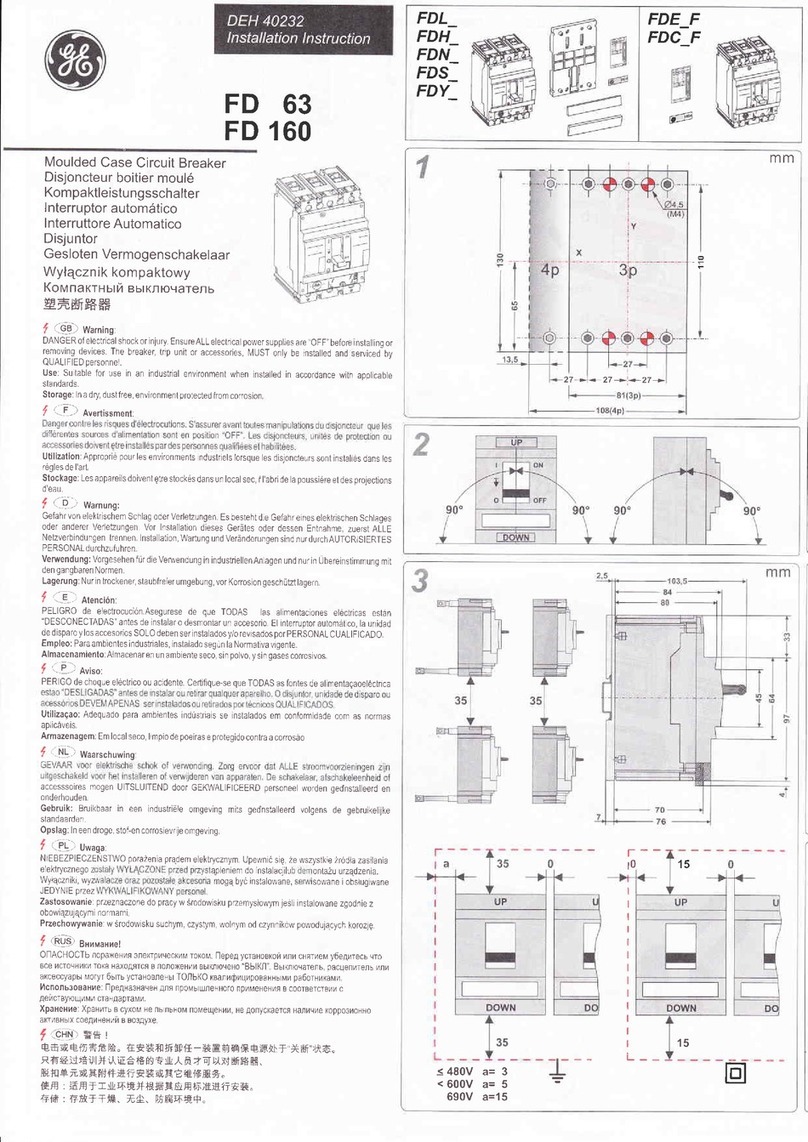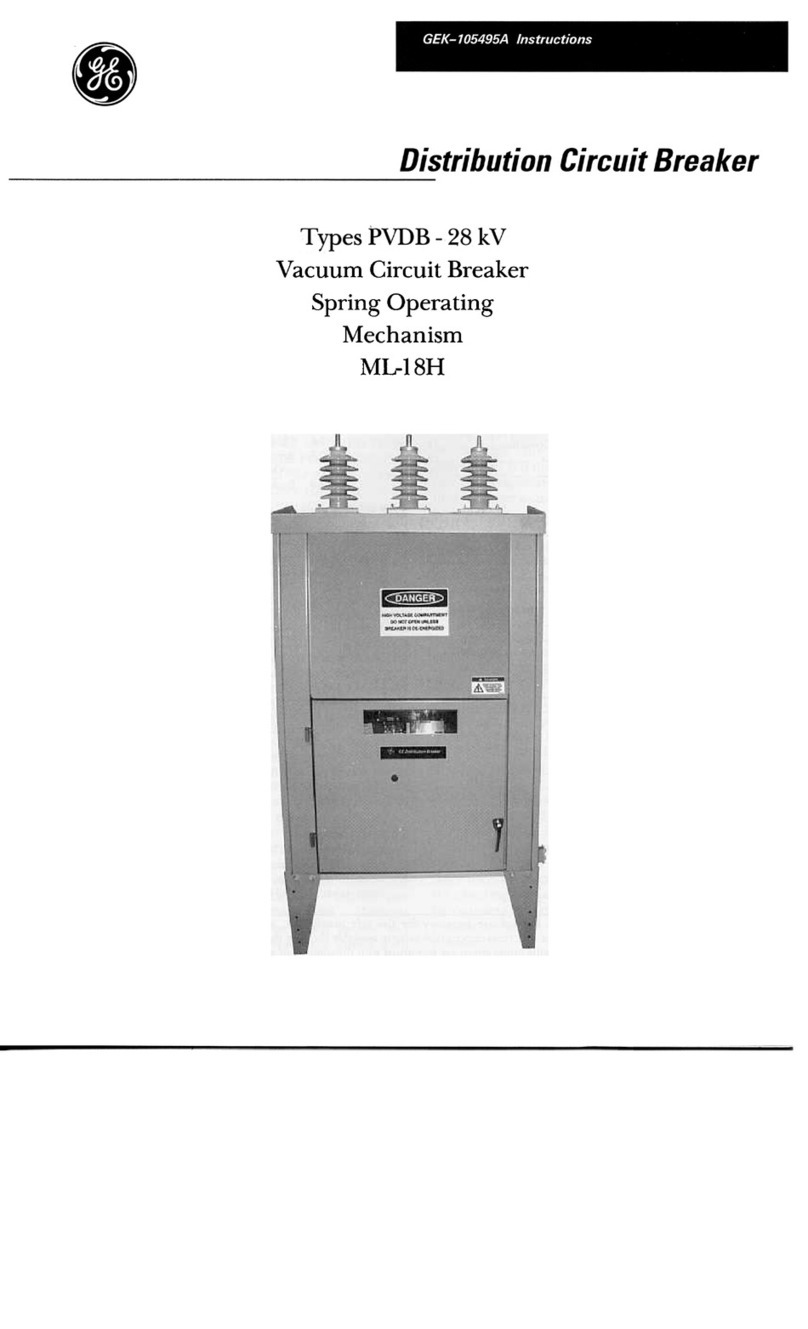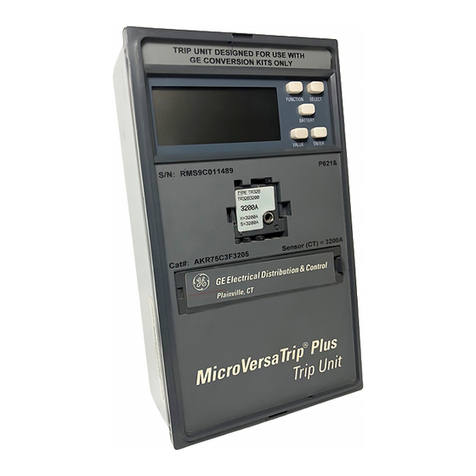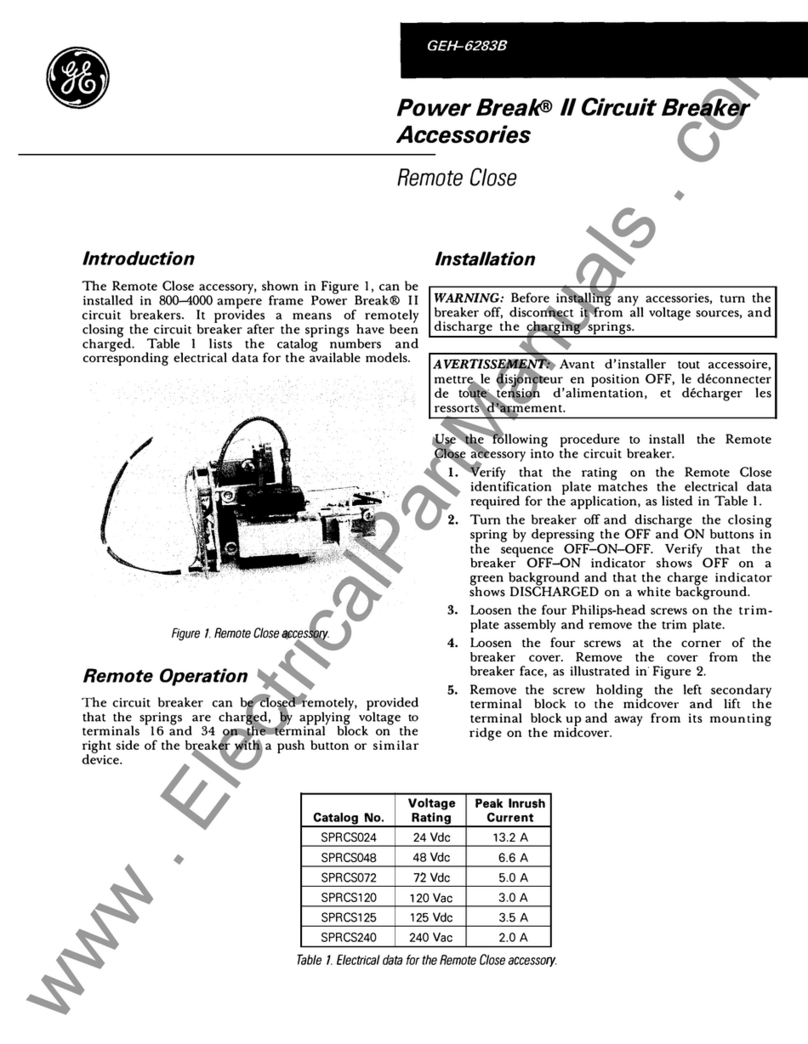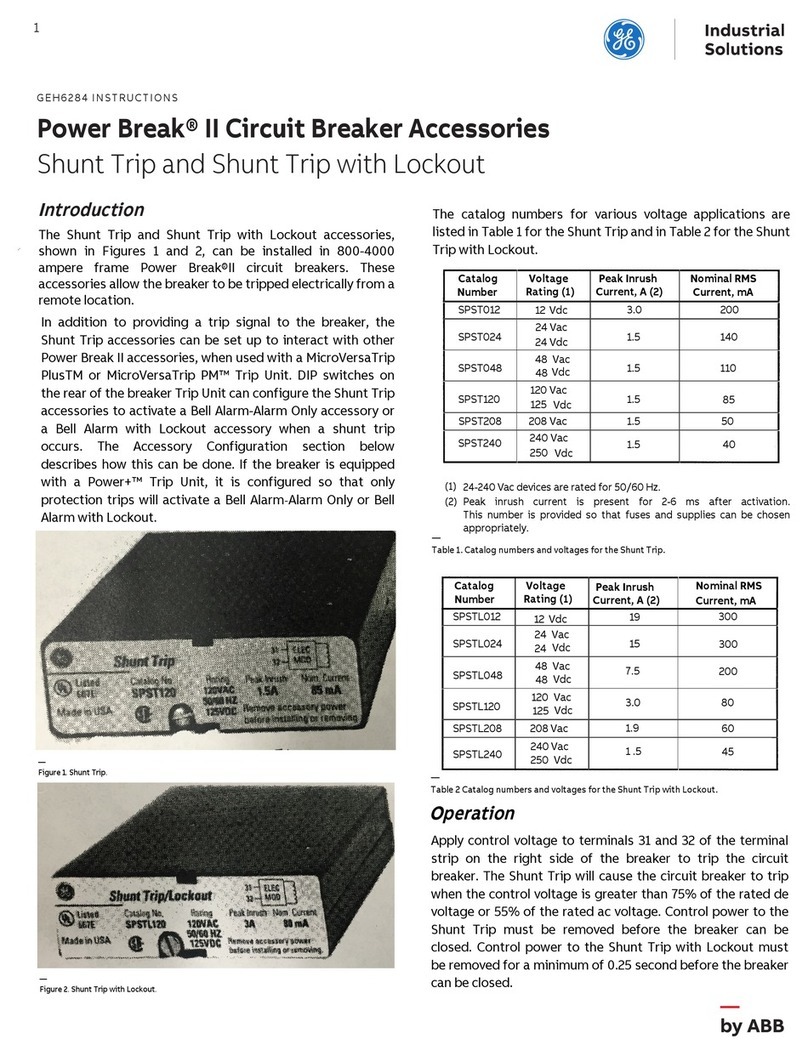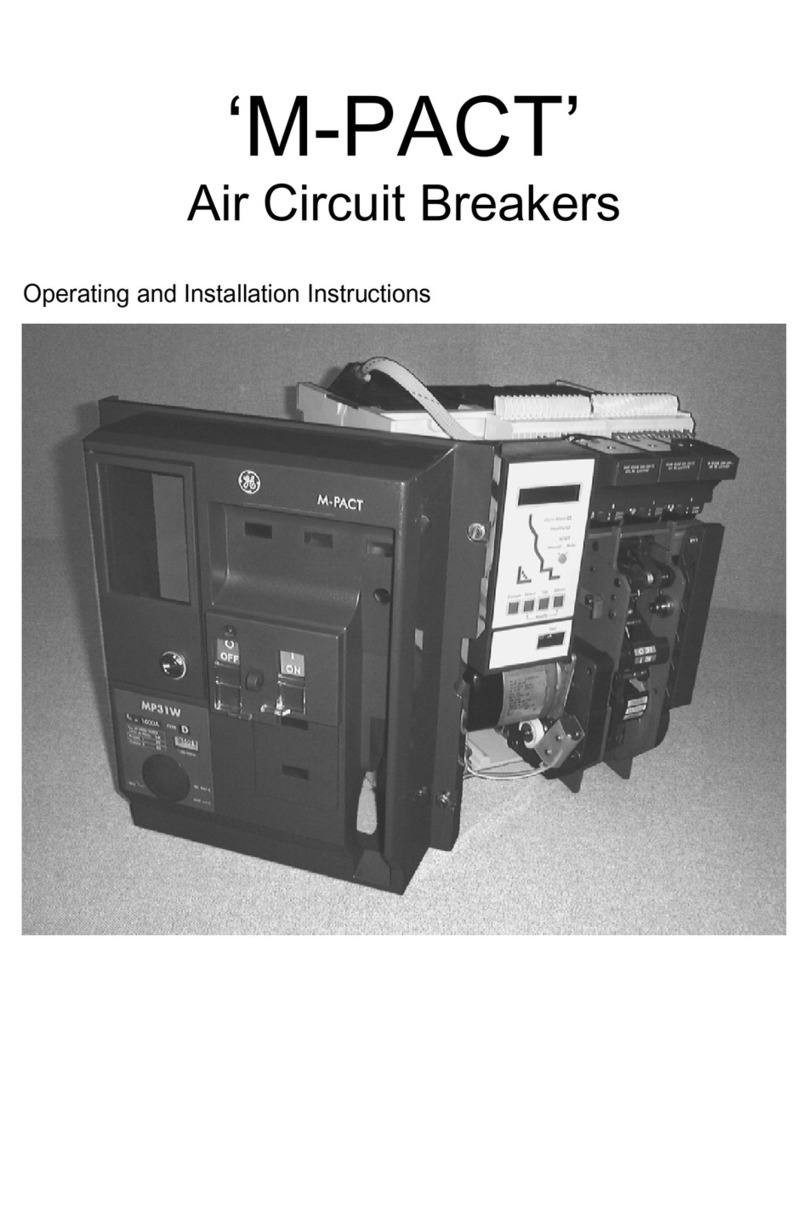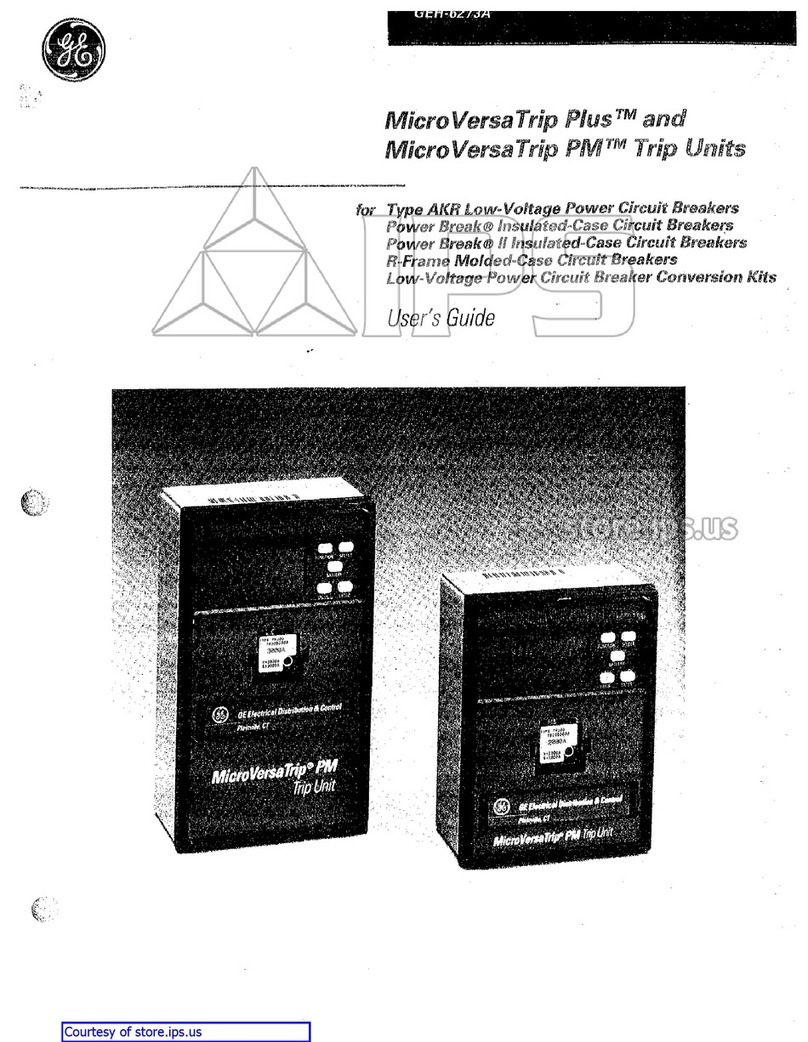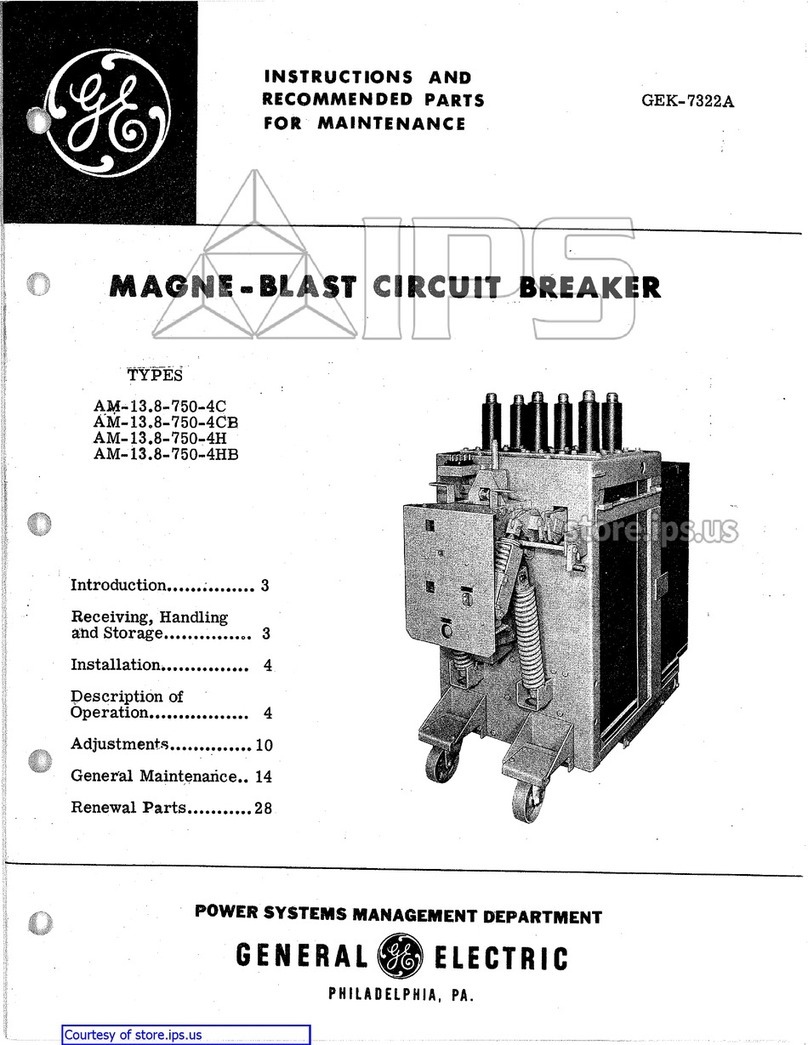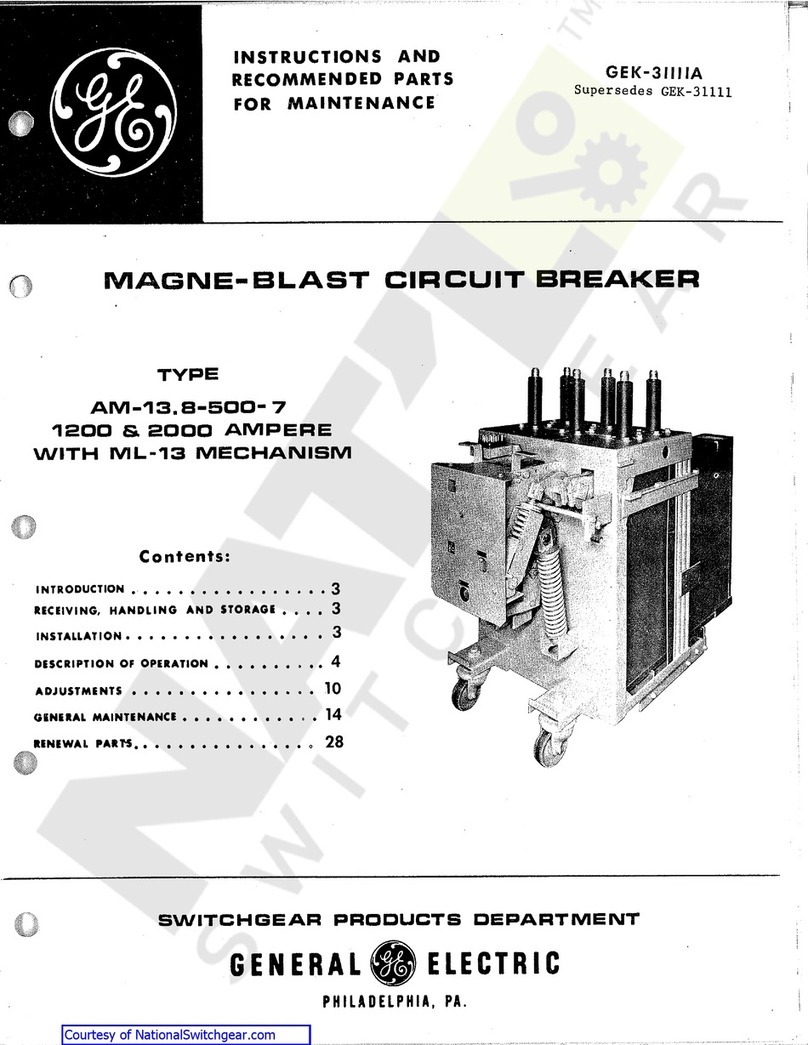
GEr-861518
DRAWOUT BREAKERS
GENERAL
Drawout breakers are manufactured in four different
styles, identified in Table 2 by the mounting code letters
None, A, B & C. The "no-letter" models are used in General
Electric's AKD Switchgear. Code A breakers were later intro-
duced with AKD-5 Switchgear and feature closed-door draw-
out ooeration. Code B breakers provide an alternate closed-
door drawout arrangement with the stationary element
furnished as a preassembled "substructure". Code C
breakers are exclusively for AKD-6 Switchgear; they employ
the Code A drawout mechanism but have finger-type primary
studs instead of tubular. The construction and operation of
each of these drawout styles is covered under respective
headings in the following text.
As a general rule, breakers of the same drawout type,
voltage rating and ampere frame size are physically inter-
changeable. In addition, to be electrically interchangeable
with respect to secondary and control circults, they must
have duplicate wiring. The degree of interchangeability and
the mechanisms for controlling it are discussed separately
on page 1 7.
NOTE: The four drawout types are mutually non-
interchangeable; before attempting to insert a
breaker, verify that the breaker model matches the
compartment.
No CODE LETTER (AKD SWITCHGEAR) (Fig. 1)
These "no-lette/' AKR-75/'l 00 models are replacements
for their AK-75 and AK-100 predecessors in AKD switchgear.
The racking mechanism is breaker-mounted and the
breakers are bolted to a roller-mounted tray in an arrange-
ment similar to the B Type (see page 8). In addition to the
characteristics listed in Table 1, the AKD drawout has the
following unique aspects:
1. There are three (3) distinct drawout positions - CON-
NECTED, TEST and WITHDRAWN.
2. Racking travel occurs only between the CONNECTED
position and a point just short of reaching the TEST position.
3. The compartment door must be open during racking.
Breaker Insertion (AKD Type)
1. Prior to lifting a breaker to its intended compartment
location, observe the following precautions:
a. Check the compartment to insure that it is free of
foreign objects.
b. Verify that the breaker is the correct type for that
compartment.
c. Insure that the breaker ls OPEN.
d. Apply athin, fresh coat of D50HD38 lubricantto the
b re ake r's p ri m ary di scon n ects.
e. lnsure that the racking cams on the breaker are
correctly positioned for initial engagement with the
pins in the compartment. To do this, insert the rack-
ing handle and rotate it fully clockwise.
t. lf a compartment contains a keylock, it will not ac'
cept the AKR-751100 replacement breakers as re-
ceived. The AKR drawout mechanism differs from
that of its predecessor AK model, causing the AKR
breaker to mechanically interfere with the keylock
during breaker insertion. To remedy this it will be
necessary to relocate the keylock using new mount-
ing hardware included as a modification kit. So al-
tered, the compartment accepts both AK and AKR
types.
2. Using a suitable lifting mechanism and spreader rig,
position lifting hooks at the cutout notches in the top wrap-
around f rames of the breaker. Exercise care to avoid damage
to the control wiring.
3. Open the compartment.door. Keeping the rollout tray
positioned inside the compartment, raise the breaker above
the elevation of the tray.
4. Depress the test position stop lever and pull the tray all
the way out to its WITHDRAWN position.
5. Lower the breaker over the tray until it is about one-
half inch above the two dowel pins on the tray. Push the
breaker back into the comoartment until the rear bottom
flange of the breaker rests against the guides behind the
dowel oins.
6. Slowly lower and guide the breaker onto the tray so
the holes in the rear flange fit over the two dowel pins. When
correctly positioned on the dowel pins, the breaker's rear and
side bottom flanges will rest firmly on the tray.
7. Secure the breakerto the tray by inserting and tighten-
ing two-s/e inch hex-head screws into the front holes of its side
flanges.
8. lf the breaker is a manually operated type, push it into
the compartment until the TEST position stop engages,
preventing further travel. The breaker is now in the TEST
position.
lf the breaker is electrically operated, push it into the
compartment until the spring discharge stop is encountered.
Release this by depressing the "spring discharge" lever on the
bottom of the breaker (see fig. 1), then continue pushing the
breaker into the compartment until the TEST position stop
engages.
NOTE:A sprlng discharge stopwill not be presentin
some AKD-type compartments originally furnished
for electrically operated AK-75 and AK-100 breakers
of the non-quick-close type.
9. Depress the TEST position stop lever and push the
breakerfarther intothe compartment until the outersurfaces of
the racking cams butt against the racking pins in the housing.
10. Insert the racking handle (673D0500-636-05) on the
jackscrew shaft at the upper right side of the breaker. Rotate
it clockwise until the jackscrew comes to a solid stop. The
breaker is now in the CONNECTED oosition.
5
